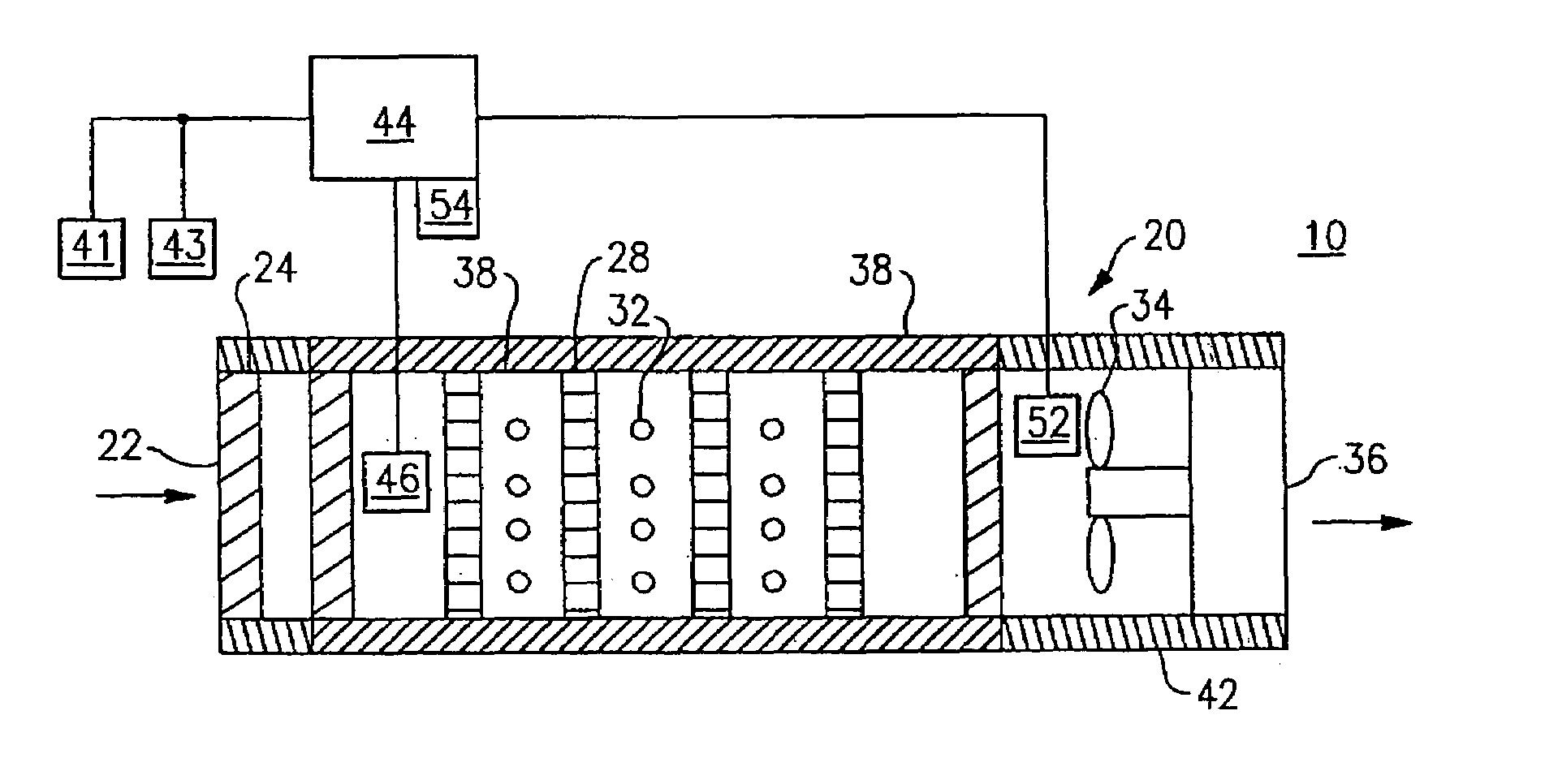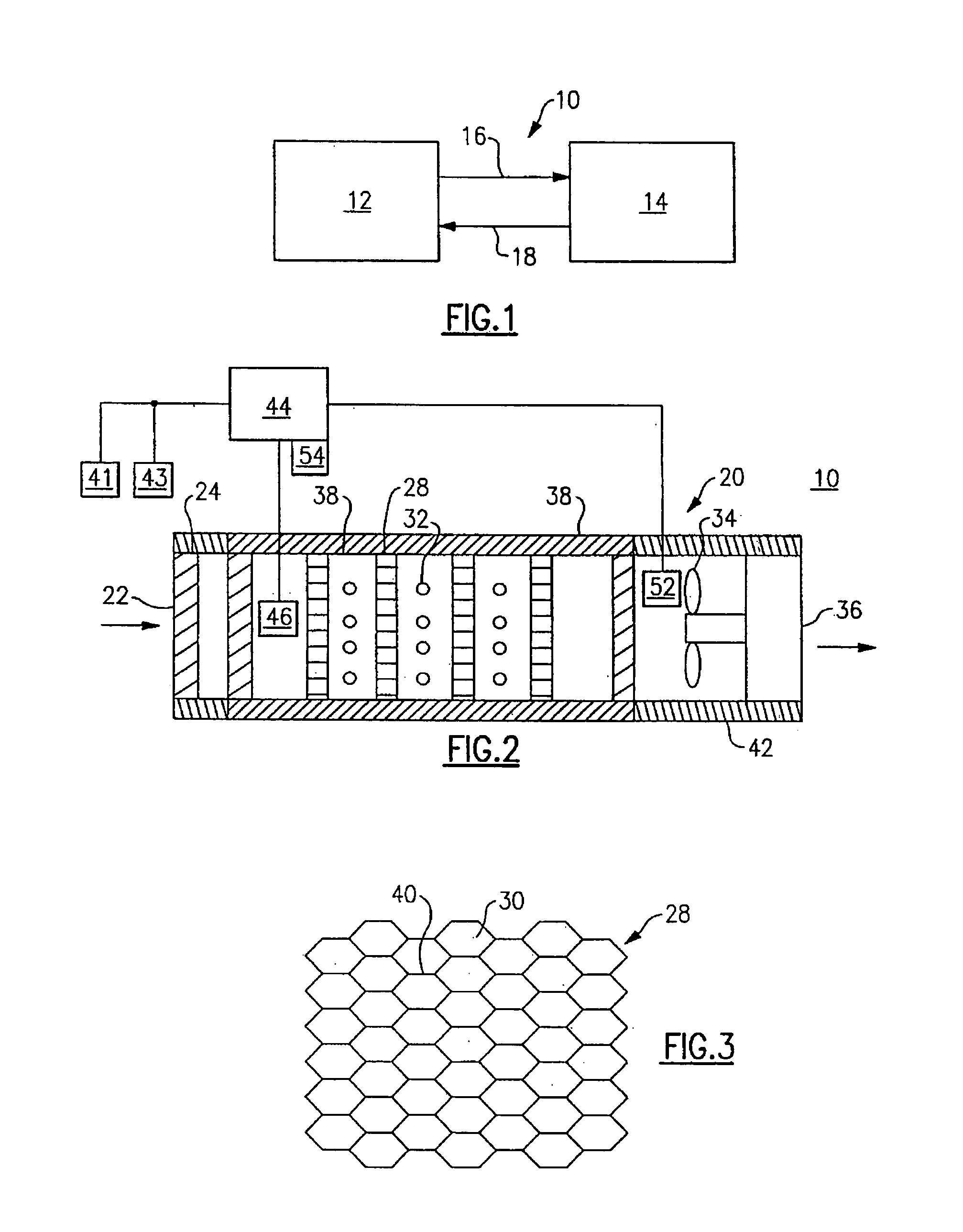System to enhance the photocatalytic oxidation rate of contaminants through selective desorption of water utilizing microwaves
- Summary
- Abstract
- Description
- Claims
- Application Information
AI Technical Summary
Benefits of technology
Problems solved by technology
Method used
Image
Examples
Embodiment Construction
[0018]FIG. 1 schematically illustrates a building, vehicle, or other structure 10 including an interior space 12, such as a room, an office or a vehicle cabin, such as a car, train, bus or aircraft. An HVAC system 14 heats or cools the interior space 12. Air in the interior space 12 is drawn by a path 16 into the HVAC system 14. The HVAC system 14 changes the temperature of the air drawn 16 from the interior space 12. If the HVAC system 14 is operating in a cooling mode, the air is cooled. Alternately, if the HVAC system 14 is operating in a heating mode, the air is heated. The air is then returned back by a path 18 to the interior space 12, changing the temperature of the air in the interior space 12.
[0019]FIG. 2 schematically illustrates an air purification system 20 employed to purify the air in the building or vehicle 10 by oxidizing contaminants, such as volatile organic compounds and semi-volatile organic compounds, to water, carbon dioxide, and other substances. The volatile ...
PUM
| Property | Measurement | Unit |
|---|---|---|
| wavelength | aaaaa | aaaaa |
| humidity | aaaaa | aaaaa |
| temperature | aaaaa | aaaaa |
Abstract
Description
Claims
Application Information
 Login to View More
Login to View More - R&D
- Intellectual Property
- Life Sciences
- Materials
- Tech Scout
- Unparalleled Data Quality
- Higher Quality Content
- 60% Fewer Hallucinations
Browse by: Latest US Patents, China's latest patents, Technical Efficacy Thesaurus, Application Domain, Technology Topic, Popular Technical Reports.
© 2025 PatSnap. All rights reserved.Legal|Privacy policy|Modern Slavery Act Transparency Statement|Sitemap|About US| Contact US: help@patsnap.com


